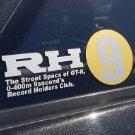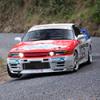Andrew's R32 Gtr With Forged Rb30Dett Build
Announcements
-
Similar Content
-
Latest Posts
-
By thatjawncrazy · Posted
don't know anyone in this thread, but i just found it, read the entire thing in a few hours, realized greg is still posting progress, and just have to say, this is awesome. it looks awesome. 100% right about the Uras kit making it a pain to get on hoists...have the same kit on my 34 and it takes six 2x4s and race ramps to do it without taking parts off. this reminds me exactly of this thread. https://grassrootsmotorsports.com/forum/build-projects-and-project-cars/r63-amg-the-unicorn-of-my-destruction/110824/page8/ -
The only way to make that better is to weld on some bozozoku tips up past window height and roll with the cool kids.
-
I'd want an even MORE side on view. More or less you want to make sure the outlet is actually square with the outermost part of the bumper. Or you end up getting soot all over your bumper from your hektik exhaust. In any case, it looks pretty close. I think the way to fix this is probably more of an overhaul at an exhaust specialty shop if you want tips that are rounded off or sit nicely with the bumper but have proper clearance and don't move - Probably more of a redesign than a quick fix. I've pencilled in my own exhaust with its own various problems, pinholes, PITA fitment, and other issues and can see myself going to a shop and saying "JUST DO THIS BUT BETTER?" Which is gonna work better than any more small fixes. I'm gonna chime in here officially with "from an outsider perspective this exhaust looks fine so this is self OCD probably" (which I also suffer from)
-
By joshuaho96 · Posted
Reminds me I really need to install that HKS oil cooler I bought years ago. -
It be 40°C outside lately. 10W60 is a good idea here. Well, certainly 10W50.
-







Recommended Posts
Create an account or sign in to comment
You need to be a member in order to leave a comment
Create an account
Sign up for a new account in our community. It's easy!
Register a new accountSign in
Already have an account? Sign in here.
Sign In Now